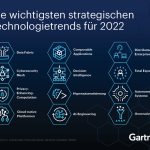Unveiling The Power Of The Latest Office Technology Trends: Click Now To Stay Ahead!
Latest Office Technology Trends
Greetings, friends!
In today’s fast-paced and ever-evolving world, technology plays a crucial role in transforming the way we work. The office environment is no exception, as advancements in technology continue to shape and enhance our productivity. In this article, we will explore the latest office technology trends that are revolutionizing the workplace and improving efficiency and collaboration.
1 Picture Gallery: Unveiling The Power Of The Latest Office Technology Trends: Click Now To Stay Ahead!

1. Introduction
Technology has become an integral part of modern offices, enabling employees to work smarter and faster. From artificial intelligence (AI) to cloud computing, the latest office technology trends are changing the way businesses operate. In this introduction, we will provide an overview of these trends and their impact on the workplace.
1.1. Artificial Intelligence (AI) and Machine Learning
🤖AI and machine learning have emerged as game-changers in the office environment. These technologies can automate repetitive tasks, analyze vast amounts of data, and provide valuable insights. AI-powered virtual assistants, such as chatbots, can improve customer service and enhance employee productivity.

Image Source: i2.wp.com
1.2. Internet of Things (IoT)
💡The Internet of Things connects devices, sensors, and systems, enabling them to communicate and share data. In an office setting, IoT devices can monitor energy usage, manage temperature and lighting, and optimize resource allocation. This technology improves efficiency, reduces costs, and creates a more sustainable workspace.
1.3. Cloud Computing
☁️Cloud computing allows businesses to store and access data and applications over the internet. It eliminates the need for physical servers and provides scalable and flexible solutions. Cloud-based collaboration tools enable remote work, seamless document sharing, and real-time collaboration among team members.
1.4. Virtual and Augmented Reality
👓Virtual and augmented reality technologies offer immersive experiences in the office. Virtual reality can simulate training scenarios, allowing employees to practice and learn in a safe environment. Augmented reality enhances productivity by overlaying digital information onto real-world objects, improving accuracy and efficiency.
1.5. Cybersecurity
🔒With the increasing reliance on technology, cybersecurity has become a critical concern for businesses. Companies need to protect sensitive information, prevent data breaches, and ensure the privacy of employees and customers. Robust cybersecurity measures, including encryption, multi-factor authentication, and employee training, are essential to safeguarding the office environment.
1.6. Automation and Robotics
🤖Automation and robotics are transforming repetitive and manual tasks in the office. Robotic process automation (RPA) can streamline workflows, reduce errors, and free up employees to focus on more strategic and creative tasks. From automated data entry to robotic assembly lines, these technologies enhance productivity and efficiency.
1.7. Data Analytics and Business Intelligence
📊Data analytics and business intelligence tools empower businesses to make informed decisions. By analyzing large volumes of data, organizations can identify trends, optimize processes, and gain a competitive edge. From sales forecasting to customer segmentation, data-driven insights drive business growth and success.
2. What: Latest Office Technology Trends
The latest office technology trends encompass various advancements that are reshaping the workplace. Let’s delve deeper into each trend:
2.1. Artificial Intelligence (AI) and Machine Learning
2.1.1. AI-powered virtual assistants improve productivity and enhance customer service.
2.1.2. Machine learning algorithms analyze data and provide valuable insights.
2.1.3. AI chatbots streamline communication and automate repetitive tasks.
2.1.4. Natural language processing enables voice-controlled interactions with devices.
2.1.5. AI-powered analytics enhance decision-making and optimize business processes.
2.2. Internet of Things (IoT)
2.2.1. IoT devices monitor and control office infrastructure, such as lighting and temperature.
2.2.2. Smart sensors track resource usage and optimize energy consumption.
2.2.3. Connected devices improve security measures by detecting and preventing threats.
2.2.4. IoT-enabled asset tracking improves inventory management and reduces losses.
2.2.5. Real-time data from IoT devices enables predictive maintenance and reduces downtime.
2.3. Cloud Computing
2.3.1. Cloud storage provides a secure and scalable solution for data storage and backup.
2.3.2. Cloud-based collaboration tools enable seamless teamwork and document sharing.
2.3.3. Virtual desktop infrastructure allows remote access to workstations and applications.
2.3.4. Cloud-based software reduces IT costs and ensures up-to-date applications.
2.3.5. Scalable cloud resources adapt to changing business needs and demands.
2.4. Virtual and Augmented Reality
2.4.1. Virtual reality training enhances employee skills and reduces training costs.
2.4.2. Augmented reality improves accuracy and efficiency in complex tasks.
2.4.3. Virtual meetings and collaboration spaces enable remote and immersive interactions.
2.4.4. AR visualization enhances design and prototyping processes.
2.4.5. VR and AR applications improve customer experiences and product demonstrations.
2.5. Cybersecurity
2.5.1. Robust encryption ensures secure transmission and storage of sensitive data.
2.5.2. Multi-factor authentication adds an extra layer of security to access systems.
2.5.3. Employee cybersecurity training raises awareness and reduces the risk of breaches.
2.5.4. Advanced threat detection and prevention systems protect against cyber attacks.
2.5.5. Regular security audits and updates ensure the office environment remains secure.
2.6. Automation and Robotics
2.6.1. Robotic process automation (RPA) automates repetitive office tasks.
2.6.2. Autonomous robots perform physical tasks, such as cleaning or inventory management.
2.6.3. Automated workflows streamline processes and reduce human error.
2.6.4. AI-powered chatbots handle customer inquiries and provide support.
2.6.5. Robotic assembly lines improve efficiency and productivity in manufacturing.
2.7. Data Analytics and Business Intelligence
2.7.1. Advanced analytics tools uncover insights and patterns in large datasets.
2.7.2. Predictive analytics models forecast sales and optimize inventory management.
2.7.3. Data visualization simplifies complex information and aids decision-making.
2.7.4. Real-time dashboards provide instant access to key performance indicators.
2.7.5. Business intelligence tools enable data-driven decision-making and strategy development.
3. Who: Beneficiaries of Latest Office Technology Trends
The latest office technology trends benefit various stakeholders in the workplace:
3.1. Employees
3.1.1. Greater productivity and efficiency due to automation and AI-powered tools.
3.1.2. Enhanced collaboration through cloud-based platforms and virtual meeting spaces.
3.1.3. Improved job satisfaction by eliminating repetitive and mundane tasks.
3.1.4. Access to real-time data and insights for informed decision-making.
3.1.5. Continuous learning and skill development through VR and AR training programs.
3.2. Employers
3.2.1. Increased productivity and reduced operational costs through automation.
3.2.2. Improved decision-making through data analytics and business intelligence.
3.2.3. Streamlined workflows and optimized resource allocation for better efficiency.
3.2.4. Enhanced employee satisfaction and retention through technology-driven initiatives.
3.2.5. Enhanced competitiveness and innovation through technology adoption.
3.3. Customers
3.3.1. Improved customer service through AI-powered virtual assistants and chatbots.
3.3.2. Personalized experiences through data-driven recommendations and insights.
3.3.3. Efficient and seamless transactions through digitalization and automation.
3.3.4. Enhanced product experiences through AR visualization and demonstrations.
3.3.5. Increased trust and security through robust cybersecurity measures.
3.4. Environment
3.4.1. Energy savings and reduced carbon footprint through IoT-enabled smart buildings.
3.4.2. Reduced paper waste through digitalization and cloud-based document management.
3.4.3. Optimized resource usage through IoT sensors and monitoring systems.
3.4.4. Sustainable practices through remote work and reduced commuting.
3.4.5. Enhanced data analytics for identifying and addressing environmental impacts.
4. When: Adoption of Latest Office Technology Trends
The adoption of the latest office technology trends varies across industries and organizations:
4.1. Early Adopters
4.1.1. Technology-driven industries, such as IT and software development, embrace trends early.
4.1.2. Startups and agile organizations are more open to experimentation and innovation.
4.1.3. Industries with high competition and the need for efficiency, such as manufacturing, adopt automation and robotics.
4.1.4. Businesses focused on customer experience, such as retail and hospitality, adopt AI and virtual reality.
4.1.5. Organizations with remote or distributed teams rely heavily on cloud computing and collaboration tools.
4.2. Mainstream Adoption
4.2.1. As technology matures and becomes more accessible, mainstream adoption increases.
4.2.2. Medium-sized businesses and traditional industries, such as banking and healthcare, adopt technology trends.
4.2.3. Government organizations leverage technology for improved service delivery and citizen engagement.
4.2.4. Educational institutions integrate technology for remote learning and digital classrooms.
4.2.5. Office buildings and commercial spaces implement IoT for sustainability and cost savings.
4.3. Lagging Adopters
4.3.1. Some industries and organizations are slower to adopt technology trends due to various factors.
4.3.2. Small businesses with limited resources may have budget constraints or resistance to change.
4.3.3. Highly regulated industries, such as healthcare and finance, face compliance challenges.
4.3.4. Cultural factors and employee resistance can hinder the adoption of new technologies.
4.3.5. Legacy systems and dependencies on outdated technology may delay adoption.
5. Where: Implementation of Latest Office Technology Trends
The implementation of the latest office technology trends can occur in various areas:
5.1. Physical Workspace
5.1.1. IoT sensors and devices monitor and control building infrastructure, such as lighting and HVAC systems.
5.1.2. Augmented reality tools aid in design and space planning, improving efficiency and aesthetics.
5.1.3. Robotics and automation optimize physical tasks, such as cleaning, inventory management, and logistics.
5.1.4. Virtual reality training simulates real-life scenarios for employee skill development.
5.1.5. Collaborative workspaces equipped with the latest technology promote teamwork and creativity.
5.2. Digital Infrastructure
5.2.1. Cloud computing platforms provide secure and scalable storage and application hosting.
5.2.2. Virtual desktop infrastructure enables remote work and access to workstations and applications.
5.2.3. AI-powered chatbots and virtual assistants enhance communication and automate tasks.
5.2.4. Data analytics and business intelligence tools provide insights for decision-making.
5.2.5. Cybersecurity measures protect digital assets and ensure data privacy.
5.3. Employee Workflows
5.3.1. Automation and robotics streamline repetitive and manual tasks, reducing human error.
5.3.2. Collaboration tools facilitate remote work and seamless document sharing.
5.3.3. Artificial intelligence analyzes data, provides insights, and supports decision-making.
5.3.4. Virtual and augmented reality tools enhance training and improve accuracy.
5.3.5. Data-driven processes optimize efficiency and resource allocation.
6. Why: Importance of Latest Office Technology Trends
The latest office technology trends are essential for businesses and organizations due to several reasons:
6.1. Improved Productivity
6.1.1. Automation and AI-powered tools reduce time spent on repetitive tasks.
6.1.2. Streamlined workflows and optimized processes enhance efficiency and output.
6.1.3. Real-time data and insights enable
This post topic: Latest Technology Trends



